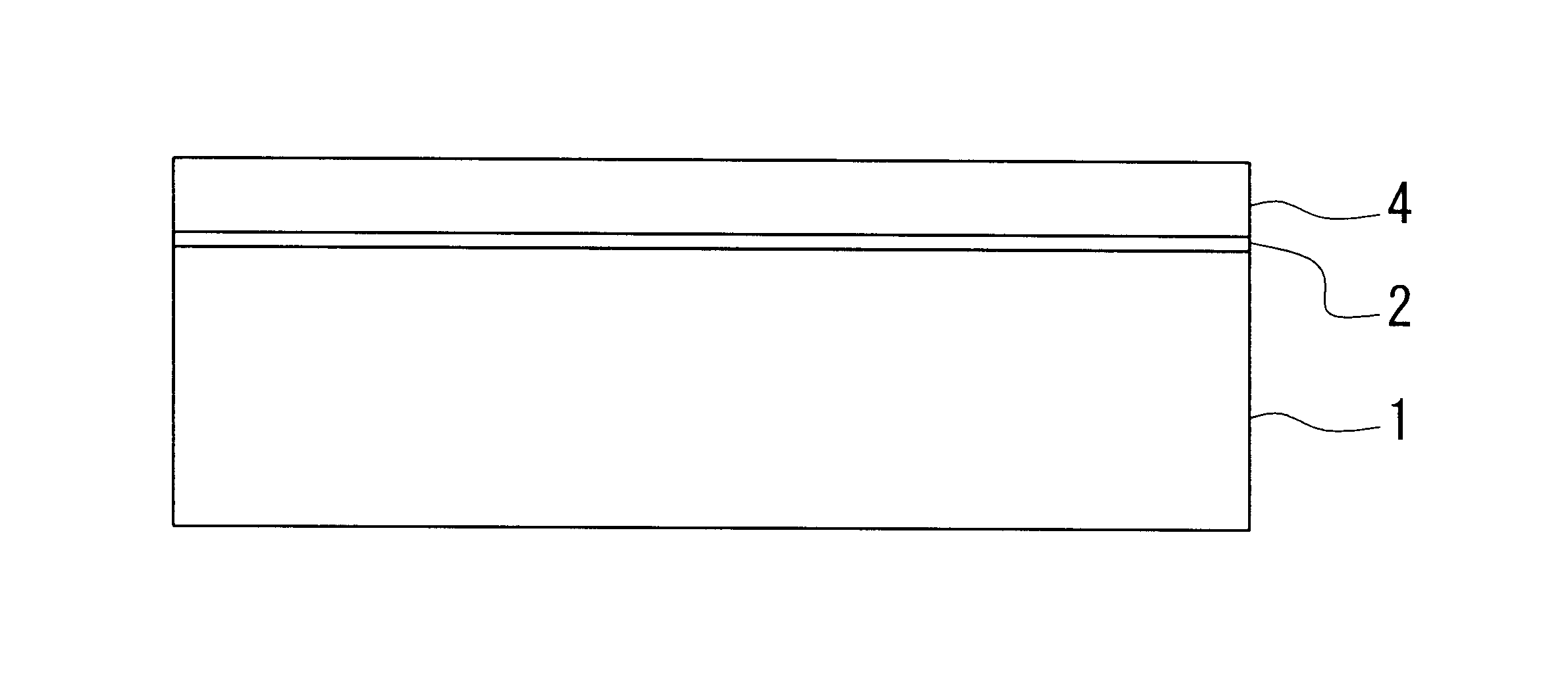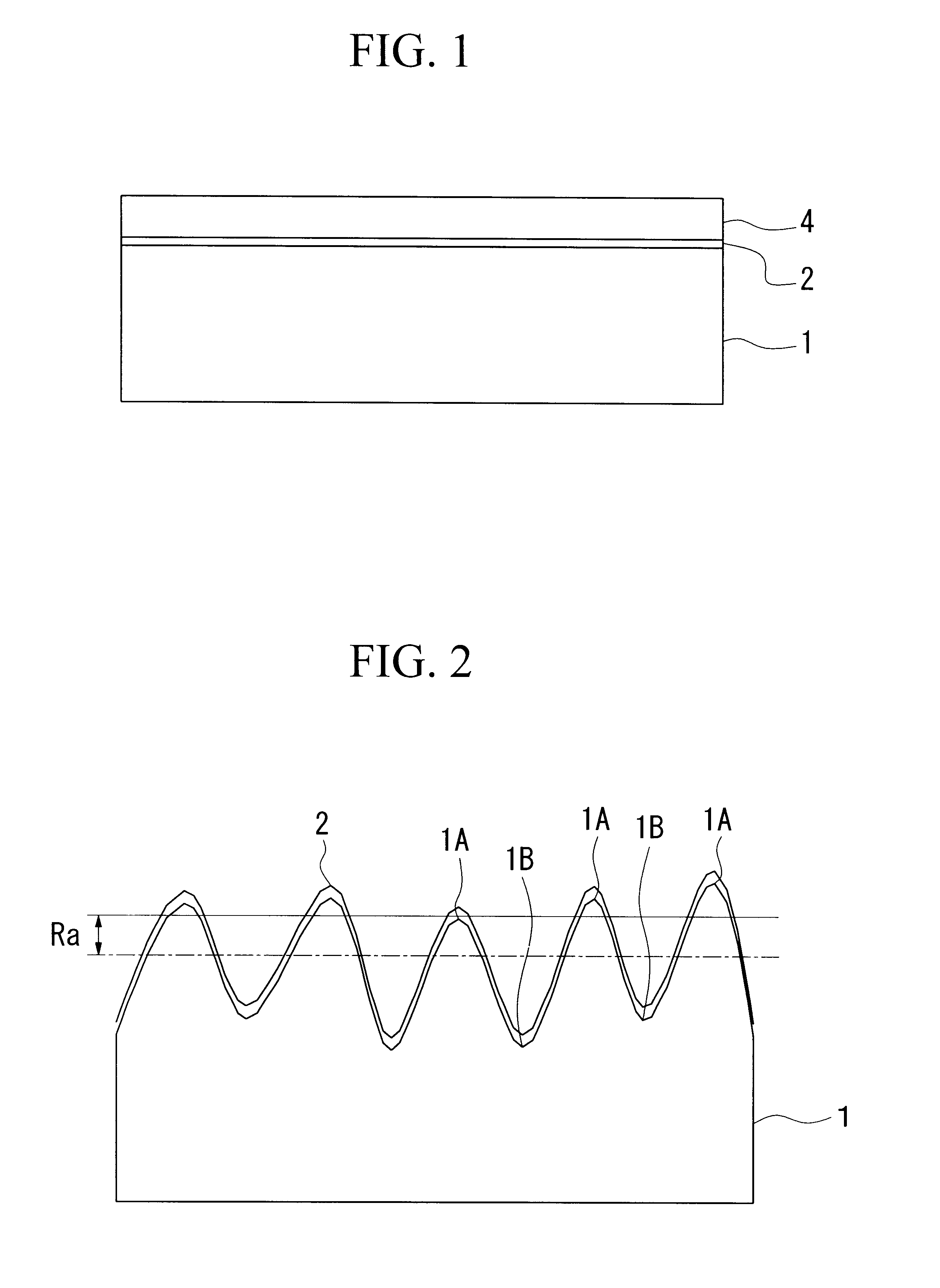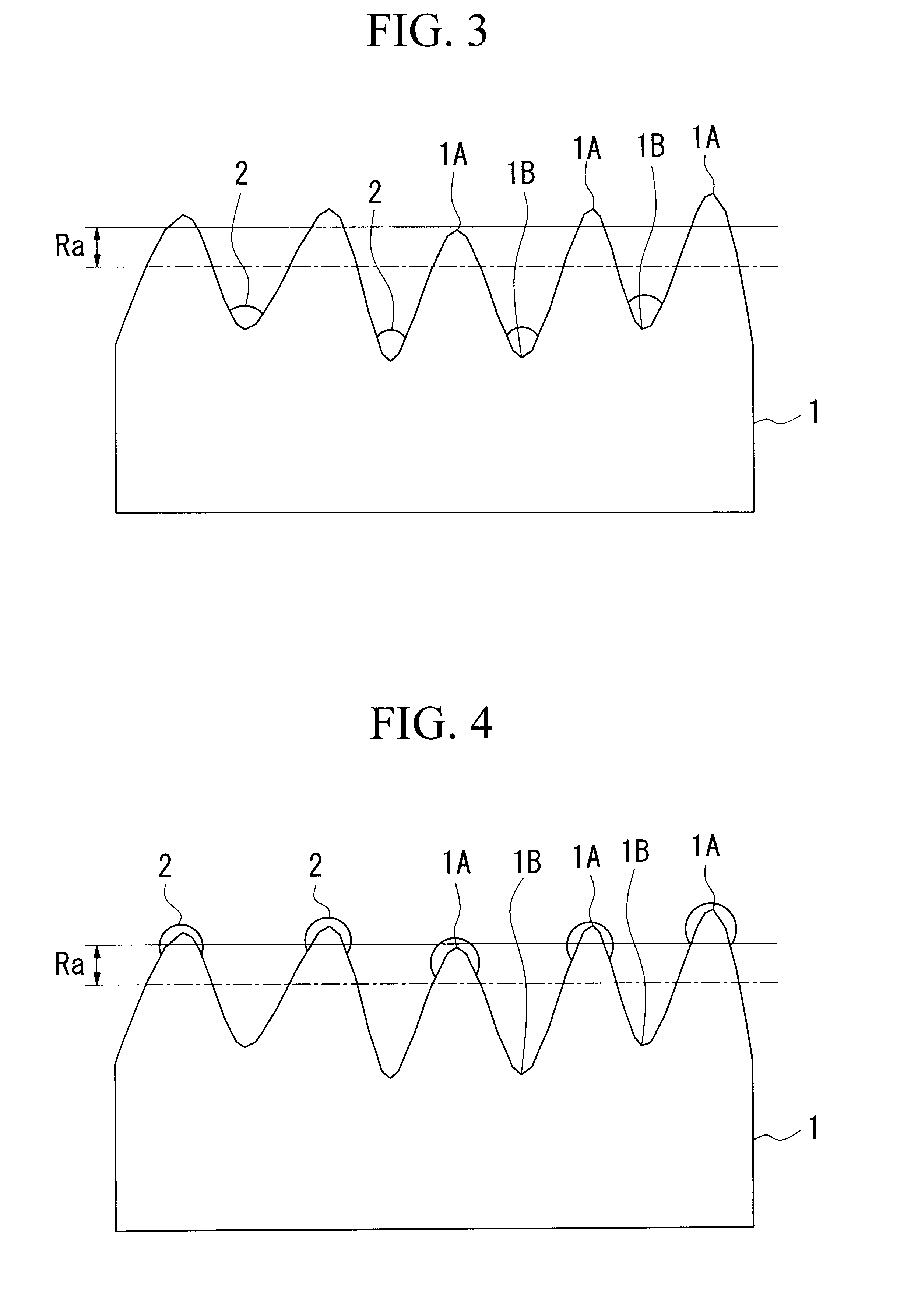Metallized polyimide film
a polyimide film, metalized technology, applied in the direction of plasma technique, water-setting substance layered product, synthetic resin layered product, etc., can solve the problems of poor dimensional stability of the adhesive layer, inability to fully satisfy the demands of even thinner films, and difficulty in ultra fine processing of circuit boards. achieve the effect of superior bonding strength and large bonding strength
- Summary
- Abstract
- Description
- Claims
- Application Information
AI Technical Summary
Benefits of technology
Problems solved by technology
Method used
Image
Examples
example 1
The commercial product "Upilex S" (thickness 50 .mu.m) manufactured by Ube Industries was used as a BPDA type polyimide film material, and this film material was subjected to plasma treatment using argon gas, under conditions including a radio frequency of 0.4 W / cm.sup.2 and a treatment time of 5 minutes. The Ra value for the film material following this treatment was 2.73 nm.
This surface treated film was then set inside a sputtering apparatus, and an intermediate layer and a metal layer were formed on the plasma treated surface under the conditions described below.
Intermediate layer material: molybdenum
Film formation conditions: argon gas, high frequency output 200 W
Film thickness: 1 nm=36.6% of the Ra value (2.73 nm)
Metal layer material: copper
Film formation conditions: argon gas, high frequency output 200 W
Film thickness: 300 nm
A copper sulfate bath was then used to form a 20 .mu.m electroplated layer of copper on the metal surface of the metallic thin film, thereby obtaining a m...
example 2
The commercial product "Kapton II" (thickness 50 .mu.m) manufactured by DuPont-Toray Co., Ltd. was used as a PMDA type polyimide film material, and by performing treatment in the same manner as the example 1, a metallized polyimide film of the example 2 was obtained. The Ra value following surface treatment was 2.93 nm (and consequently the thickness of the intermediate layer was 34.1% of the Ra value).
PUM
| Property | Measurement | Unit |
|---|---|---|
| Ra | aaaaa | aaaaa |
| thickness | aaaaa | aaaaa |
| thickness | aaaaa | aaaaa |
Abstract
Description
Claims
Application Information
 Login to View More
Login to View More - R&D
- Intellectual Property
- Life Sciences
- Materials
- Tech Scout
- Unparalleled Data Quality
- Higher Quality Content
- 60% Fewer Hallucinations
Browse by: Latest US Patents, China's latest patents, Technical Efficacy Thesaurus, Application Domain, Technology Topic, Popular Technical Reports.
© 2025 PatSnap. All rights reserved.Legal|Privacy policy|Modern Slavery Act Transparency Statement|Sitemap|About US| Contact US: help@patsnap.com



